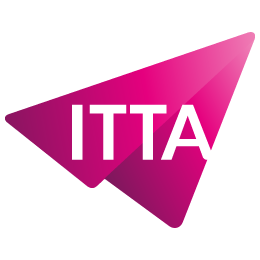Home > Boomers, Gen Z, and Millennials: How to Turn Generational Differences into a Strength
Have you ever felt that palpable tension in a meeting when your 55-year-old colleague frowns at a suggestion made by a 22-year-old intern? Welcome to the new challenge facing Swiss companies: managing generational differences in the workplace. Today, four generations share the office for the first time, from Baby Boomers to the youngest members of Gen Z. And despite popular belief, this explosive mix can become your greatest competitive advantage. According to a study by Atlassian, 92% of employees already work in multigenerational teams, yet only 43% of decision-makers believe this diversity truly improves performance. The gap is real, and significant. So, how do you move from generational clashes to effective intergenerational collaboration? How can differences in age, values, and expectations become a lever for innovation within your organisation? That’s exactly what we’ll explore together.

Before you can effectively manage generational diversity, you need to understand who is behind these labels. Because no, not all Millennials are glued to their smartphones, and no, not all Boomers resist change.
Born in the post-war period, these employees grew up during the economic boom known as the “Trente Glorieuses,” when work meant security and steady professional progression. Now close to retirement or already in a second career, they bring something invaluable to your teams: experience and organisational memory.
Their values? Loyalty to their employer, respect for hierarchy, and a strong commitment to work, sometimes bordering on presenteeism. In an SME, they are often the ones who have known the toughest clients for 20 years and know exactly how to handle them. This generation values stability and sees benefits as a key condition for engagement.
Their biggest challenge? Adapting to new technologies and, above all, passing on their expertise before retiring. When a 60-year-old employee leaves with 35 years of experience stored in their head, your organisation loses intellectual capital that is often irreplaceable.

Often called the “forgotten generation,” they are squeezed between dominant Baby Boomers and highly visible Millennials. Yet these forty- and fifty-somethings are a vastly underrated asset. Why? Because they lived through oil crises, early waves of mass unemployment, and developed exceptional resilience.
Unlike their parents, who experienced full employment, Gen X values stability without taking it for granted. They are loyal, but that loyalty must be earned. Their greatest strength? They create a bridge between the old and new worlds of work. First to adapt to digital tools without being born into them, they understand both the Boomers’ perspective and the Millennials’ mindset.
For them, professional recognition is a genuine form of achievement. They want to be valued for their skills and rigour, not just for seniority. In Swiss companies, they often embody stability while remaining open to gradual change.

Ah, Millennials, a generation often criticised yet widely misunderstood. Born with the internet, they grew up watching their parents lose jobs despite years of loyalty. The result? They’ve redefined their relationship with work.
For them, a job is more than just a monthly paycheck. They look for meaning, transparency, and a healthy work-life balance. And this balance is non-negotiable.
These thirty-somethings and young forty-somethings are also major drivers of career mobility. They know they won’t spend their entire career in a single company. 59% of Millennials consider learning and development opportunities extremely important, compared with only 44% of Gen X and 41% of Baby Boomers.

Here they are, the newcomers joining your teams with their own codes, native digital mastery, and expectations that may seem excessive to older colleagues. Born into a world shaped by health, climate, and economic crises, they have developed a sharp awareness of uncertainty.
Their relationship with work? Pragmatic and conditional. Only 19% of Gen Z employees say they would work for a company that does not share their values. In other words, four out of five young professionals will turn down a job if your organisation lacks a clear social or societal commitment.
This generation places a sense of purpose at the core of their motivation. The more useful they feel, the more engaged they become. They also fully embrace the “work smarter, not harder” mindset. 27.1% of Gen Z workers use AI every week, compared with 62.1% of Boomers who never use it. The digital divide is real, and significant.
For this generation, mental health, sustainability, and social impact are not marketing gadgets, they are essential criteria. In Switzerland, where quality of life and sustainable development are already key societal concerns, Gen Z finds fertile ground to thrive.

Now that we’ve set the scene, let’s be honest: managing four generations under the same roof is no walk in the park along Lake Geneva. The challenges are real, varied, and can seriously undermine team dynamics if left unaddressed.
“OK Boomer”you’ve heard it, right? This sharp little phrase perfectly captures the issue of generational stereotypes. On one side, young people seen as lazy, always glued to their phones. On the other, older colleagues seen as rigid or resistant to change.
The issue? These clichés create very real tensions. In companies, hierarchical relationships become strained due to misunderstandings between generations. These tensions show up as snide comments at the coffee machine, difficult collaborations, and projects that stall.
Remote work, flexible hours, four-day work weeks… these topics spark heated debates across generations. While younger employees see flexibility as non-negotiable, older workers often prefer a more structured and secure environment.
Take remote work, for example: today, all generations come into the office about three times a week. But if they could choose freely? Gen Z and Gen X would prefer four days in the office, while Millennials and Boomers would opt for only two. Surprising, isn’t it? Stereotypes don’t always hold up.
The real challenge isn’t remote work vs. on-site work, it’s finding a balance that meets everyone’s needs: social connection and spontaneous collaboration for some, focus and reduced commute times for others. In Switzerland, where commuting between Geneva and the suburbs, or Zurich and surrounding municipalities, can be long, this question is especially important.
Picture this: your 58-year-old colleague sends a three-paragraph formal email to request a meeting. The reply from their 25-year-old teammate? A thumbs-up emoji on Teams. Misunderstanding guaranteed.
Communication habits vary dramatically across generations. Boomers prefer email and in-person meetings. Millennials switch seamlessly between instant messaging and video calls. Gen Z masters ultra-fast, multichannel communication, which older colleagues may perceive as superficial or disrespectful.
More than one-third of younger generations (Y and Z) say their colleagues don’t understand their humour, compared with just a quarter of Baby Boomers. These seemingly minor misunderstandings create distance and weaken team cohesion.

After this rather daunting overview, here comes the good news. Because yes, the same generational diversity that keeps you up at night can become a powerful strategic asset. And it’s not just theory; the numbers back it up.
Hold on tight: according to the OECD, by building a multigenerational workforce, a country can increase its GDP per capita by up to 19% within 30 years. What does that mean for your organisation?
43% of decision-makers say multigenerational teams consistently achieve better results than teams made up of people from a single generation. Why? Because you combine the deep experience of senior employees with the agility and creativity of younger ones. It’s like having both a GPS that knows every route AND a compass that finds new paths.
Let’s talk innovation. What happens when a 55-year-old employee who has lived through three economic crises sits at the same table as a 23-year-old intern who has only known uncertainty? Magic. Or chaos. It all depends on how you manage the encounter.
Companies like IBM, Michelin, and L’Oréal have understood this well. IBM has implemented dedicated programmes to foster intergenerational collaboration, combining the expertise of seasoned workers with the creativity and agility of younger employees. The result? Innovations no generation could have created alone.
At Salesforce, reverse mentoring, where young employees teach older colleagues about new technologies, has strengthened intergenerational collaboration and accelerated innovation. Younger staff bring digital fluency, while senior employees contribute customer knowledge. This powerful mix boosts collective creativity.
Here’s an often-overlooked advantage: your multigenerational teams reflect your market. Your clients are between 20 and 70 years old? So are your employees. And that’s a tremendous asset when it comes to understanding the expectations of every customer segment.
L’Oréal, for example, leverages generational diversity to gain varied perspectives on international markets. By fostering an inclusive environment where different generations collaborate, the company has developed innovative products that meet the needs of diverse demographic groups.
In Switzerland, where the population is diverse in both age and culture, this 360° perspective becomes a major competitive advantage.

So, you’re convinced that generational diversity can drive performance. Now, how do you make it happen in practice? Here are the strategies that truly work in real-life organisations.
Reverse mentoring is the secret weapon of intergenerational management. The concept? A junior trains a senior. Yes, you read that right. Your 23-year-old intern teaches your 58-year-old director how to use LinkedIn, generative AI, or collaborative tools. In return, the director shares their business expertise, market knowledge, and strategic vision.
This approach of two-way coaching allows both sides to learn while strengthening intergenerational relationships. It’s a win-win: the senior updates their digital skills, and the junior builds confidence and leadership.
How do you implement it? Start small. Identify volunteers, forcing people never works. Set clear goals (learn a tool, understand a process), and plan regular 30-minute sessions. Informal setups often work better than formal ones.
Too many companies let teams form naturally. The result? People group by affinity, and therefore by age. A critical mistake. Organisations afraid of intergenerational conflict tend to assemble similar collaborators, falling into the trap of “comfortable cloning.”
The solution? Intentionally mix your project teams. On a digital transformation project, for instance, include: a Baby Boomer who knows the business processes by heart, a Gen X project manager, a Millennial with strong customer insight, and a Gen Z member bringing the latest tech trends. You’ll be surprised, the magic happens fast.
83% of decision-makers say they have intentionally created, or plan to create, multigenerational teams. Gen Y and Gen Z leaders are the most supportive (90%). Why? Because they see tangible results: innovation, faster problem-solving, and complementary skill sets.

You don’t speak to a 60-year-old employee the same way you speak to a 22-year-old intern. That’s not discrimination, it’s relational intelligence. Boomers appreciate recognition of their expertise and meaningful responsibilities. Gen X wants autonomy and fair compensation. Millennials need frequent feedback and a sense of purpose. Gen Z looks for measurable impact and modern tools.
In practice? Multiply the channels: email for official announcements, Teams or Slack for day-to-day topics, in-person meetings for strategic issues. The manager must ensure that everyone can speak openly and respectfully, encouraging communication methods that work for all.
And above all, train your managers to be adaptable. This is THE key skill in intergenerational management. A good manager knows how to switch styles: more directive with a Boomer expecting clear instructions, more participative with a Millennial who wants to co-create, and more inspiring with a Gen Z employee who seeks meaning.
Want to retain all generations? Offer flexibility. But be careful, not the same flexibility for everyone. Between 35% and 42% of employees, depending on their generation, would not accept a job offer without flexible working hours.
The solution? A flexible framework with constraints that everyone can accept. For example: three mandatory days in the office for team cohesion (including one common day for the whole team), and two flexible days (office or remote, depending on preference). Flexible hours within a defined time range. Results measured based on objectives, not on time spent at the office.
And why not explore the four-day work week? It ranks among the most attractive benefits for all generations. It’s rare to see such broad consensus.
Beyond tools and processes, it’s your company culture that makes the real difference. You need to bring people together around shared values, not just targets and KPIs.
These shared values cut across generations. Quality of work, mutual respect, innovation, ethics, Swiss-style professionalism… these principles resonate just as much with a Boomer as with a Gen Z employee. Organise workshops to co-create these values with representatives of all generations. You’ll be surprised by how many common points outweigh the differences.
Intergenerational collaboration offers two major benefits: it helps everyone find their place and feel legitimate and valued, and it becomes a source of innovation and economic performance thanks to the collective intelligence it generates.

Let’s be clear: without trained managers, all these great strategies will go nowhere. The manager is the pivot, translator, and facilitator of this intergenerational alchemy. Day to day, they are the ones who will either bring your generational diversity policy to life, or let it fail.
So what defines a good intergenerational manager? Above all, it’s not someone who treats everyone exactly the same. It’s someone with exceptional style adaptability. They know how to be more directive when a Boomer expects clear instructions, more participative with a Millennial who wants to co-create, and more inspiring with a Gen Z employee who is searching for meaning.
The manager must encourage knowledge sharing between generations, set up mentoring programmes, and stay attentive to the different needs of each person. They are a constant tightrope walker, balancing fairness with individualisation.
Key skills? Active listening, first of all. Truly listening to what a 25-year-old employee has to say without judging them through one’s own generational lens. Then mediation. Because intergenerational conflicts will happen, that’s inevitable. The manager must know how to step in quickly, create neutral spaces for dialogue, and refocus everyone on shared goals rather than differences.
And finally, leading by example. A manager who practices presenteeism while preaching flexibility loses all credibility. In Switzerland, where authenticity and consistency are highly valued, this exemplary behaviour is even more crucial.

Generational differences are an inescapable reality in 2025. Baby Boomers, Gen X, Millennials, and Gen Z have fundamentally different values and ways of working. But this diversity can become your greatest asset: 43% higher performance for multigenerational teams, 92% of employees who favour this type of collaboration, and innovations born from the meeting of experience and fresh perspectives.
How do you get there? Reverse mentoring, mixed teams, tailored communication, organisational flexibility, and manager training. There’s no magic formula, but there are proven practices you can adapt to your Swiss business context. The key is to start now, because in five years, those who haven’t invested in this will be left behind.
The future belongs to organisations that know how to value ALL generations and turn diversity into collective intelligence. Your teams bring together four generations with complementary talents. That’s your hidden gold. So, are you ready to turn generational differences into a real competitive advantage?
How can you manage conflicts between generations within a team?
The key lies in early mediation and in creating neutral spaces for dialogue. As soon as tension appears, organise a discussion where each person can share their point of view without being judged, focusing on shared goals rather than differences. Train your managers in non-violent communication techniques and encourage generational empathy.
What are the main advantages of a multigenerational team?
The benefits are numerous: increased performance (43% of decision-makers report better results), innovation driven by diverse perspectives, knowledge transfer that protects intellectual capital, and a deeper understanding of the market. The OECD even estimates that a country can increase its GDP by 19% over 30 years by promoting intergenerational work.
What is the first concrete action to take to improve intergenerational collaboration?
Start with awareness and stereotype-busting: organise a two-hour workshop where representatives of each generation share their view of work, their expectations, and their strengths. Then identify two or three volunteer pairs to pilot a reverse mentoring programme over three months. It’s fast, low-cost, and the results are often spectacular.

ITTA is the leader in IT training and project management solutions and services in French-speaking Switzerland.
Our latest posts
Subscribe to the newsletter

Nous utilisons des cookies afin de vous garantir une expérience de navigation fluide, agréable et entièrement sécurisée sur notre site. Ces cookies nous permettent d’analyser et d’améliorer nos services en continu, afin de mieux répondre à vos attentes.
Monday to Friday
8:30 AM to 6:00 PM
Tel. 058 307 73 00
ITTA
Route des jeunes 35
1227 Carouge, Suisse
Monday to Friday, from 8:30 am to 06:00 pm.